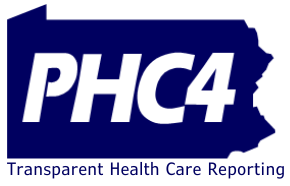Contact: Joe Martin
717-232-6787 or
RECENT DATA SUGGESTS DRUG WITHDRAWAL IN NEWBORNS MAY BE LEVELING OFF
Harrisburg, PA – June 4, 2019 – The rate of newborns suffering from drug withdrawal remained relatively stable since 2016âafter steady increases since 2000-2001âaccording to a new report from The Pennsylvania Health Care Cost Containment Council (PHC4).
âWhile the rates might be leveling off, and that is encouraging, it is too soon to tell whether these numbers will begin to steadily decline or spike upwards again,â said Joe Martin, PHC4âs Executive Director. âStill, with just over 1,800 babies born addicted in the most recent year studied, this remains a serious and heart-wrenching problem,â added Mr. Martin.
Neonatal Abstinence Syndrome (or NAS) refers to an array of medical problems developing shortly after birth in newborns that were exposed to addictive drugs, typically opioids, while in the motherâs womb. Withdrawal signs develop because these newborns are no longer exposed to the drug for which they have become physically dependent.
âThe cost and quality implications of this scenario are significant. Along with suffering painful withdrawal symptoms, these babies will be treated in very expensive neonatal hospital units and many may experience serious developmental problems that could follow them for the rest of their lives,â noted Mr. Martin.
Specifically, PHC4 examined hospitalization data from federal fiscal year (FFY) 2018 (October 1, 2017 through September 30, 2018). The analyses showed that the rate of hospital stays for newborns with NAS in FFY 2018 was 14.4 per 1,000 newborn hospitalizationsâdown slightly from 15.2 in FFY 2016. Since the difference in rates is not âstatistically significant,â it reflects stability in the rates rather than a true downward turning point.
In all, there were 1,833 NAS-related newborn stays in FFY 2018. The quarterly numbers across the year were as follows:

Newborns with NAS typically required more days in the hospital and were much more likely to suffer from complications compared to all other newborns. The average hospital stay for newborns with NAS was 15.9 days compared to 3.4 days for all other newborn stays. This difference amounted to approximately 23,000 additional days in the hospital for babies with NAS.
NAS babies were more likely to have respiratory distress, difficulty feeding, low birth weight and prematurity compared to all other newborn stays.
| Complication | NAS Newborn Stays | All Other Newborn Stays |
|---|---|---|
| Respiratory distress | 24.4% | 10.0% |
| Difficulty feeding | 16.6% | 4.1% |
| Low birth weight | 15.7% | 6.8% |
| Prematurity | 15.3% | 9.0% |
Other findings showed that:
- NAS-related hospitalizations added an estimated $15.2 million in hospital payments.
- Medicaid was the anticipated primary payer for 89% of NAS-related hospitalizations.
- Looking specifically at newborn stays paid by Medicaid in FFY 2017, newborns with NAS had higher 30-day readmission rates (3.6%) compared to all other newborns (2.4%).
- NAS rates were highest among white, non-Hispanic newborns, occurring at a rate of 18.0 per 1,000 newborn hospitalizations. The rates for black, non-Hispanic newborns and Hispanic newborns were 9.5 and 5.9, respectively.
- NAS rates varied by income. Rates were highest (at 19.5 per 1,000 newborn hospitalizations) for newborns from communities with median household incomes in the range of $40,000 to
The brief also includes county-level NAS rates.
The brief is available on PHC4’s website at www.phc4.org. You can also link to it through social media on Facebook and Twitter.
PHC4 is an independent state agency charged with collecting, analyzing and reporting information that can be used to improve the quality and restrain the cost of health care in Pennsylvania.

